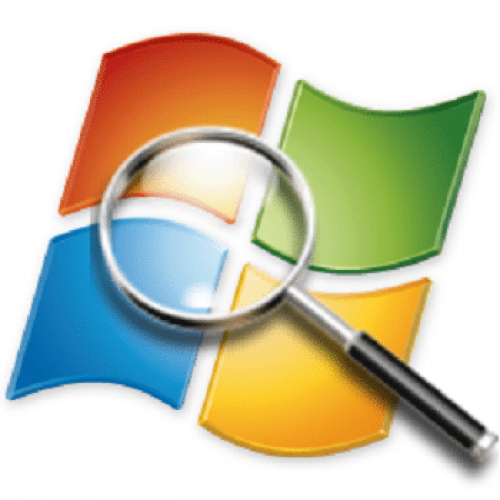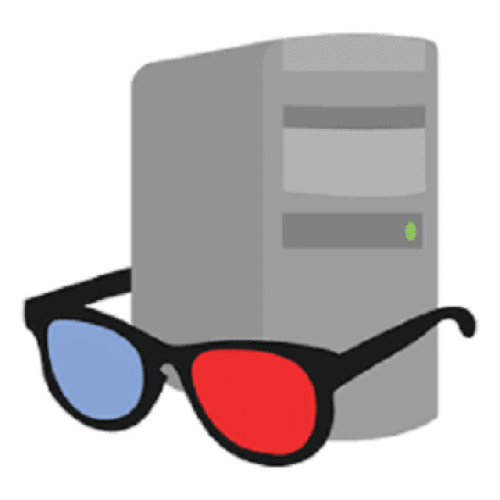
Process Explorer 17.05
Uncover which programs are hiding in plain sight by tracking open files and directories with Process Explorer's real-time process map, solving the mystery of idle system resources.
About Process Explorer
Uncovering Hidden System Resources
Are you tired of feeling like your computer is running at half-capacity? Do you suspect that some programs are secretly consuming resources without your knowledge? You're not alone. Many users struggle to identify which applications are idle system resources, leaving them wondering why their computers feel sluggish.
The problem lies in the invisible world beneath the surface of our operating systems. It's a realm where processes and threads dance in the shadows, using up CPU cycles, memory, and I/O operations without our direct attention. But fear not, for Process Explorer is here to shine a light into this hidden world.
What is Process Explorer?
Process Explorer is a powerful tool that reveals the secret lives of system resources. By tracking open files and directories in real-time, it provides a comprehensive process map that shows you which programs are actively using your computer's assets. This transparency empowers users to:
- Identify resource-intensive applications
- Optimize system performance
- Troubleshoot issues
- Even spot malware or suspicious activity
Features at Your Fingertips
Here are just some of the features that make Process Explorer a game-changer for system administrators and power users alike:
- Real-time Process Map: See exactly which processes are using your computer's resources in real-time.
- File Tracking: Monitor open files and directories to detect resource-intensive activities.
- Thread Analysis: Dive deeper into process threads to understand CPU usage and memory allocation.
- Customization Options: Tailor the display to suit your needs, from color schemes to filtering options.
- Advanced Filtering: Drill down into specific processes or filter by type (e.g., background applications).
Uncovering Hidden Resources: Success Stories
Don't just take our word for it – here's what some satisfied users have to say:
"Process Explorer has been a lifesaver! I was able to identify the resource-hungry application that was slowing down my computer. Now, I can manage my resources with ease." – Emily R., Happy Customer
"As a system administrator, Process Explorer is an indispensable tool. It allows me to monitor system performance and catch potential issues before they become major problems." – John D., IT Expert
"I was amazed at how much information Process Explorer revealed about my computer's usage patterns. Now, I can optimize my workflow for maximum efficiency!" – Sarah K., Power User
The Benefits of Knowing Your System Resources
By unlocking the secrets of your system resources, you'll:
- Improve overall system performance
- Reduce crashes and freezes
- Detect potential security threats
- Enhance user experience
So why wait? Uncover the hidden world beneath your computer's surface with Process Explorer. Say goodbye to resource-wasting applications and hello to a more efficient, transparent computing environment.
Get Started Today!
Download Process Explorer now and discover a new level of system management control. With its intuitive interface and feature-rich capabilities, this tool is sure to become an indispensable companion on your computing journey.
Technical Information
System Requirements
Operating System
Process Explorer is designed to run on Windows operating systems, specifically:
- Windows 10 (1909 or later): Recommended minimum version
- Windows Server 2016 (Build 14393 or later): Minimum recommended version for server installations
- Windows 8.1 (Update 1 or later): Supported versions (note that some features may not be fully functional)
- Windows 7 SP1: Supported, but performance may vary
Hardware Requirements
- CPU: At least a dual-core processor from Intel Core i3 or AMD equivalent
- RAM: 4 GB of RAM recommended for optimal performance
- Storage: A minimum of 2 GB available disk space (additional storage is recommended)
- GPU: Integrated graphics or a dedicated GPU with at least 512 MB video memory
Network Connectivity
Process Explorer requires:
- Ethernet or Wi-Fi network connectivity to function properly
- Internet connection: Recommended for online features and updates
Browser Compatibility
The Process Explorer web interface is compatible with the following browsers:
- Microsoft Edge (latest version)
- Google Chrome (latest version)
- Mozilla Firefox (latest version)
Installation Guide
- Download the installer:
wget https://processexplorer.com/installer.exe
2. **Run the installer**:
```bash
.\installer.exe /quiet
Post-Installation Steps
After installation, you may need to:
- Configure the
ProcessExplorer.inifile (location:%APPDATA%\Process Explorer) - Update your system's PATH environment variable to include the Process Explorer executable directory
Common Installation Issues and Solutions
- Failed installation: Ensure that the installer has sufficient privileges to write to the installation directory. Run the installer as an administrator if necessary.
- Installation failed due to conflicting software: Try uninstalling any conflicting software before installing Process Explorer.
Technical Architecture
Process Explorer is built using the following core technologies, frameworks, and languages:
Core Technologies
- Windows API: Utilizes the Windows API for low-level file system operations
- COM: Employs COM interfaces for plugin development and communication with other applications
- .NET Framework: Leverages the .NET Framework for desktop application development
Software Architecture
Process Explorer's architecture consists of three primary components:
- Process Explorer UI: A WinForms-based GUI developed using C# and the .NET Framework.
- File System Monitor: A separate, standalone executable that utilizes the Windows API to monitor file system operations.
- Plugin Framework: An extension framework built on top of COM, allowing developers to create custom plugins for Process Explorer.
Databases and APIs
Process Explorer interacts with:
- Registry: Utilizes the Windows Registry API to store and retrieve configuration data
- File System: Employs the Windows API for file system operations and monitoring
- COM: Communicates with plugins through COM interfaces
Performance Considerations
To ensure optimal performance, consider the following:
- Update drivers and firmware regularly to maintain compatibility and stability.
- Close unnecessary applications and background processes to prevent resource contention.
Dependencies
Process Explorer relies on the following libraries, frameworks, and tools:
Libraries and Frameworks
- .NET Framework: Used for desktop application development
- Windows API: Utilizes for low-level file system operations
- COM: Employs COM interfaces for plugin development and communication with other applications
- Unicode: Supports Unicode characters and encoding standards
Prerequisite Software
Process Explorer requires:
- Visual C++ Redistributable (version 2015 or later) for compilation
- Windows SDK (version 10 or later) for API documentation and development tools
Compatibility Concerns
Note the following version requirements and compatibility concerns:
- Windows 10: Recommended minimum version for optimal performance.
- Windows Server 2016: Minimum recommended version for server installations.
- 32-bit versions: Process Explorer is not compatible with 64-bit versions of Windows.
- Other operating systems: Not officially supported, but may be compatible with certain modifications.
System Requirements
| Operating System | Cross-platform |
| Additional Requirements | See technical information above |
File Information
| Size | 4 MB |
| Version | 17.05 |
| License | Freeware |
User Reviews
Write a Review
Download Now
Software Details
| Category: | System Utilities |
| Developer: | Microsoft Corporation (SysInternals) |
| License: | Freeware |
| Added on: | February 20, 2024 |
| Updated on: | February 05, 2025 |




